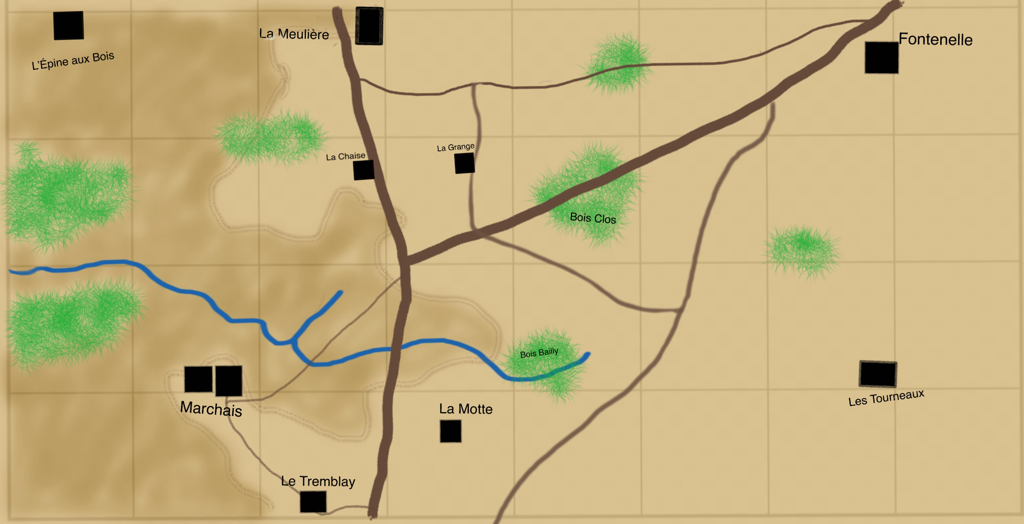|
I try to arrange a couple of multi player wargames a year and have started thinking about a theme for the next one. Period Choice of period mostly depends on what I have read most recently. This time I have gone Napoleonic, as I am thoroughly enjoying John R Elting’s Swords Around a Throne. This period is also a reliable choice for most other players. Rules Sam Mustafa’s Blücher rules have proved a good set for our multi player games, being easy to learn yet still atmospheric and satsisfying to play. Choosing a Battle I have selected Montmirail, 11 February 1814, the middle and largest engagement of the 6 Day campaign. We played and enjoyed it in the 1990s using Napoleon’s Battles. It is a three way battle with the French heavily outnumbered at the start, with numbers increasing through the day. It is also notable for the preponderance of Guard units in the French army so actually gives you a chance to use all those guard units in anger. Sources I started with F Loraine Petrie’s Napoleon at Bay, a clear and balanced analysis of the campaign. I also have the French language Napoleon, 1814 by Jean Tranié and JC Carmigniani. On line, I found an excellent source called les batailles, website address http://www.lesbatailles.com/page9/page9.html. This has a detailed and careful account with extensive orders of battle and clear maps. The Wikipedia article on Montmirail is ok but this includes some mistakes about the units present and its account of the battle is less clear. Creating the scenario At the standard Blücher game size, Montmirail comes out as a small engagement with few manoeuvre units on either side. But using the option for small scale scenarios, it becomes more interesting. Sam Mustafa is not worried by the constraints of fixed ground and time scales in Blücher but I still want a framework for scenario planning. Fortunately his previous grand tactical set, Grande Armée, was clearer on these issues so when Blücher is unclear I refer back to them. Since this is a small scale battle I settled for 1BW to equate to 150 yards. For time, I decided one hour would be represented by 4 game turns each. This is important for planning the arrival of reinforcements. The playing surface came out as follows on an 8x4 feet table, with 1BW of 150 yards being 3”. The Allies deploy at the top of the table and the French reinforcements arrive at the bottom. The grid is read as lettered columns and numbered rows (thus, Fontenelle is in box G1). The darker areas to the left are lower than their surroundings although the only time this matters is when units cross the contour line. Creating a reliable OOB is difficult at the best of times but even more so for 1814, when some Allied strengths had fallen drastically and bookkeeping for all armies, but especially the hastily assembled French forces, was sketchy. Accounts differ radically but I decided to trust the Batailles website as this seems very well sourced and argued. It also, to be frank, produces a game OOB that seems nicely balanced, which is important for player satisfaction. I accepted the seemingly majority view that there was no Young Guard at the battle. Marshal Ney, commander of the Young Guard, was present on his own and led Friant’s division with distinction, but his young guardsmen were several kilometres short of the battlefield.
In the next post I will discuss choice of figures, summarise the events of the real battle and upload the final scenario.
0 Comments
Leave a Reply. |
Archives
November 2023
Categories
All
|

 RSS Feed
RSS Feed